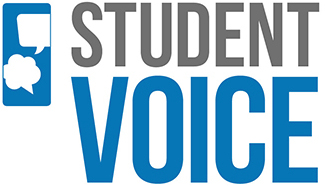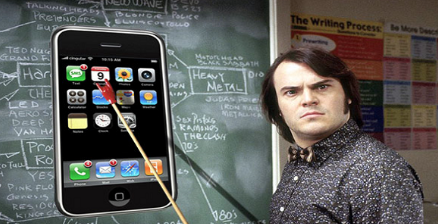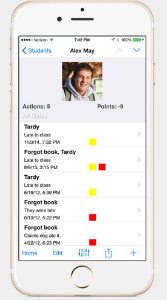Ever since the the Partnership for 21st Century Schools (P21) was created, as well as the transition into the new millennium, many schools, districts and educators have bandied about the term “21st Century School” or “21st Century Skills.”
This is done to brand or identify one’s school, district or program as being relevant, current, progressive, future-oriented and more. I know because I’ve done the same thing. I was part of opening a new project-based, high tech high school in 2008 (Minarets HS/Minarets Charter HS) and we used the moniker “A 21st Century School” from day one. Naturally, we believed we were accurate and still do.
I can see the attraction. After all, most of our schools are still living in the 20th century attempting to perfect a 19th century model. However, “21st Century” has become cliched and now requires some sort of verification and certification. Who better than me to do that? That’s right, I’ve declared myself the one to create the list to use to certify whether something is 21st century when it comes to education. And in case you haven’t figured it out, many who identify as such will not meet these standards.
Here is your 21ST CENTURY EDUCATION CHECKLIST:
Instructional Foundation is Digital
Here is your 21ST CENTURY EDUCATION CHECKLIST:
Instructional Foundation is Digital
There are no textbooks. If you are buying a textbook and using a single source for curriculum in 2016, you should not only re-think your entire approach, but also not be able to use anything that says “21st Century.” This does not mean that teachers and students cannot use books such as novels, non-fiction, etc. - either in print or digital. But it does mean that your classes do not use or rely on one printed, official textbook. If I have to explain this, you are also not 21st Century.
 Project-Based is Dominant Pedagogy
Project-Based is Dominant Pedagogy
You can call it whatever you want - PBL, Place-Based, Challenge-Based, Problem-Based, Design-Based and many others. But the bottom line is that the students, with their teachers’ facilitation, embark on real world educational endeavors that include, but are not limited to student voice and choice, collaboration (peer and professional), community or work-based connections, presentation, publishing, digital portfolios, showcases/exhibitions and more.

Democratization (Student Voice)
Students have a voice in all aspects of the school. They have input on their project choices, school governance, school policies, hiring and more. All students should be surveyed about their educational and cultural experiences on a regular basis. Students should be able to voice concerns about all aspects of their educational environment. Students will be represented on all interview panels. Get the idea?

Contemporary School Policies/Procedures
If you can’t fit your rules, expectations, dress code or other on one document equaling a single page, it does not meet the 21st century standard.

Social Media/New Literacies
If you block or ban social media use on campus, you’re out as a 21st century educational entity. Yes, you can have parameters and expectations, but more importantly all teachers and classrooms should model on a regular basis the professional and educational use and application of social media tools. Today and tomorrow’s companies, leaders and professionals will define much of what they do, make, sell, create and design through social media.

Culture of Learning
There is a clear and obvious culture of learning where all of the adults model lifelong learning. They don’t say it but do it. Teachers and staff are actively engaged in their communities and their profession. They are involved in professional reading, writing, blogging, publishing, presenting, speaking or something. If the teachers or leaders disappear over the summer and don’t respond to emails, texts, direct messages or something, then it’s not a 21st century program.


Cell Phones
It’s simple. If you allow them and use them like in professional environments, then you can be 21st century. If you don’t, you’re not. Easy….
Accessability
If students can dialogue and communicate with teachers and staff via text, email, cell, instant messenger or something similar, then you’re good. If not, you’re not 21st century.

Community Connections
This can be done through many vehicles, but is an imperative. For high schools, it can be work-based such as internships, externships, job shadows, professional mentors and more. For all K-12, it can be partnerships with local non-profits, advisory groups, expert presentations in classrooms, project feedback from professionals, solving local needs through client-based relationships and work and more.

Continuous Innovation
The days of being enamored with tradition are gone. We need to enamored with embracing continuous change through innovation. Our students are entering an economy and world that will continue to go through rapid change. Our only hope to prepare them is to model that for them each and everyday at school. This means that each new year, each new teacher, each new class, each new day and each new project needs to build on the past, but not be satisfied just repeating it. We need to constantly ask large questions and embrace bold possibilities. We need to challenge our educators to get away from lesson and activity design, and rather focus on project design. If so, regardless of the question or challenge, innovation and “new” will always rise to the top.

I’m not going to pretend this certification list is perfect or complete, but we need to collectively develop some common definition of “21 century” in terms of actual implementation and what it looks like. My current estimation is many that are calling themselves “21 century” are not meeting this above standard or even necessarily aware of all of these.
(photos courtesy of Foter, Pixabay)
Well said, and I enjoy the "bluntness". I have some questions about the consistency of content in the absence of textbooks. At some point either content scope and sequence matters or s does not, but you can't have everybody picking and choosing what subject content kids get and then have a test that relies on them having certain content knowledge. And you can't toss kids into say, the relationship between the Chumash Indians and the Spanish Missionaries without them knowing why both groups were even there. The reason I mention this is because in these first three years of Common Core, districts did just that. I am incensed, however, that the first adoptions in my district included NO initial training in the tech components, which is definitely not 21st century, more like 1950.
ReplyDelete@Jack You said test. You're not 21st century. ;)
ReplyDelete